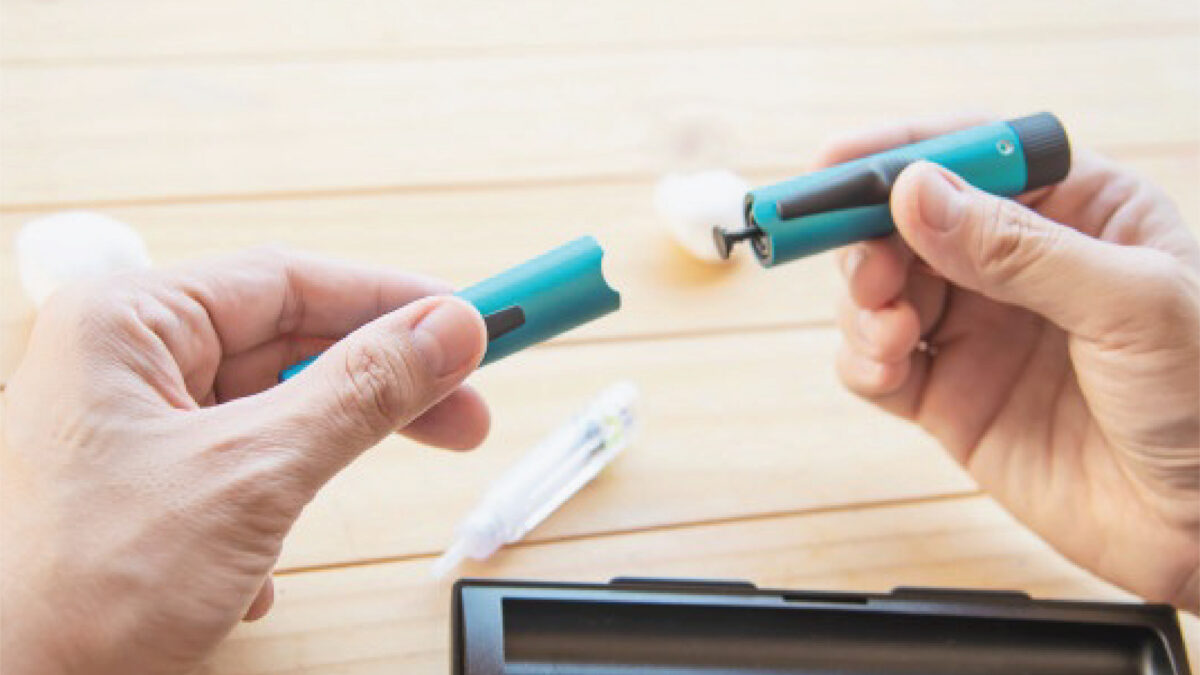
You Can Have Diabetes And Still Be A Foodie
January 14, 2022
Why Sports & Physical Activity Are Important For Children With Diabetes
January 19, 2022Ensuring the correct administration of insulin is vital when it comes to the management of blood sugar levels in those with diabetes.
Both right technique of injection and length of the needle are essential considerations for accurate delivery of insulin.
There have been numerous studies that have demonstrated that an individual’s BMI does not affect the efficacy or leakage of insulin with shorter pen needles: 4 mm or 5 mm vs. 12.7 mm.
According to the recommendations on best practices for technique of injection for those with diabetes that were released by the International Scientific Advisory Board for the Third Injection Technique Workshop in the year 2010, 4-mm pen needles were the most efficacious in all diabetics, irrespective of BMI (body mass index).
The technique of insulin injection must always be assessed in addition to consideration of physically disabling comorbid conditions while choosing the length of a needle that will be extremely manageable for those with diabetes. In addition, awareness needs to be raised when it comes to unique patient circumstances that could warrant the use of a longer 12.7-mm needle.
It was widely believed that obese individuals with diabetes would need longer needle lengths to successfully penetrate the so-called “thicker” subcutaneous tissue layers and inject insulin effectively. However, several studies have been conducted that dispute this misconception or school of thought.
Studies And Their Findings

Numerous studies have been conducted to evaluate thickness of skin, thickness of subcutaneous fat, risks associated with intramuscular injections, leakage of insulin, bruising at the site of injection, lipo-hypertrophy, and glycaemic control. These studies have one clear conclusion – shorter needle lengths are just as efficacious and safer. In addition, the International Scientific Advisory Board for the Third Injection Technique Workshop goes on to state there exists no medical reason to prescribe a needle length that is longer than 8 mm. Moreover, the board specifically recommends 4-, 5-, and 6-mm needles for all adult diabetics, regardless of their BMI.
It also recommends the insertion of 4-, 5-, and 6-mm needles at an angle of 90 degrees. In addition, if the need arises longer needles must be injected with either a skinfold or an angle of 45 degrees to avoid intramuscular injection of insulin. Shorter needles are less likely to put those with diabetes at risk for intramuscular injections and the subsequent, erratic absorption of glucose.
Some have raised concerns that shorter needles increase the risk of leakage of insulin, putting diabetics at a risk for unstable blood sugar elevations and incorrect adjustments to the dose.
Though studies have not demonstrated conclusively that there is no increase in insulin leakage with shorter needles, the amount of skin leakage that was seen was quite comparable to that seen with longer needles.
Some researchers have demonstrated that diabetics experienced less pain at the injection site with the use of 4-mm needles in comparison with the use of 5-mm ones.
In the light of this evidence, there is substantiative support for the argument that 12.77-mm needles must be considered obsolete. The eventual question that arises is why would a diabetic select a longer needle intentionally when a shorter, less painful needle works just as well?
The technique of injecting insulin directly affects glycaemic control, adherence to medications, and, finally, quality of life. Quite alarmingly, an international survey that assessed those with diabetes on multiple factors that were related to insulin injection found that numerous patients could not recall learning of several concepts such as duration of injection, mixing insulin, and site rotation. This eventually highlights the need for diverse approaches to patient education.
On a Final Note:
Evidence from studies conducted demonstrates clearly that shorter needles are just as effective as longer ones, regardless of the BMI of those with diabetes. If you are confused about your




